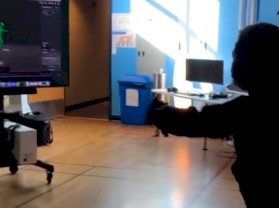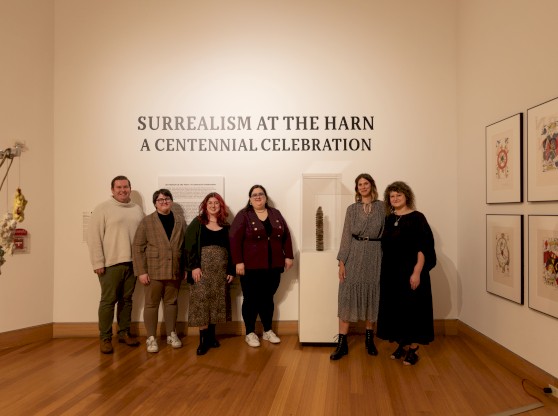Stephen Shooster, BFA ’82, recently established a new art scholarship fund, which will be a legacy for future arts students. After graduating from UF, he aimed to study architecture at Ohio State and then environmental design. His goal was to make giant sculptures. A week before beginning his master’s degree in architecture, his father, Herman, asked him to help grow the family business.
On a recent visit to campus, Shooster recalled his experiences at the College of the Arts.
Shooster started at UF with the intention of focusing on woodworking, which at the time, was only available as elective courses in the education department. After using all of his available electives, he was directed across 13th street to the College of the Arts.
“There, I discovered painting,” Shooster said. “And I didn’t have to look back because that’s the same thing as woodworking, only it’s a lot cheaper, and you can dream further than you ever imagined.”
The question of how he was going to be successful wasn’t quite at the forefront of his mind. He decided at 18 that he would be successful, his only question was what he would do with all the time in between.
Shooster returned home after graduation and went to work for his father’s small business. After losing his job in New Jersey, his father, a seasoned businessman went looking for a business opportunity in South Florida.
In 1974, he and his wife, Dorothy, purchased Ding-a-Ling Answering Service with about ten employees. Herman put his son at a desk behind those switchboards and directed him “don’t distract the switchboard operators.”
“I was supposed to sit there and do nothing,” Shooster said. “It wasn’t until years later that I understood what he was doing. He thought the operators would work harder knowing the son of the boss was stationed behind them.”
Within a couple of years, the switchboards were scheduled to be discontinued by Bellsouth. The phone company had no intention of replacing them. Scrambling, the family had to devise a way to continue the business. They purchased basic computer equipment and Shooster began training as a technician.
After about ten years of training, the artist began to decide what he wanted to do to help the business grow. He saw two paths: The Yellow Pages (graphic arts), or software. Being an aficionado of pinball machines and video games, he went with the software and he created a software company called Mission Control Enterprises. Within a year, it failed.
He tried again. This time, he created a conversion device between residential phones and business telephone trunk lines, creating a marginal success.
In 1988, beepers were permitted to be sold by answering services. Shooster and his father invested heavily, creating a raving success. As it turns out answering services and beepers are like peanut butter and jelly, everybody wanted one.
Shooster and his wife, Diane, have four children, two dogs and a cat, all of whom are serious artists and musicians.
The small company, Ding-a-Ling, changed its name to Global Response, as the business continued to grow. In 2012, his father won Sun Sentinel Businessman of the Year for Broward County. Stephen earned a patent in computer telephony integration and the business prospered. Today, Global Response employs over 1,700 people.
On top of this, Shooster’s two brothers, sister, and their respective spouses work at Global Response as well. Their mission: Your Brand, Our Passion.
Among their clients are The Metropolitan Museum of Art, Chicago Institute of Art and Museum of Modern Art (MoMa).
Throughout it all, Shooster painted every single day. He is listed in Marquis’ Who’s Who in American Art as a conceptual artist and painter. His paintings are all signed “Shoosty.”
Additionally, he started writing books. In 2004, he wrote The Horse Adjutant, a story of survival during The Nazi Holocaust. Today, he is working on his fifth book.
In 2016, he established The Stephen Shooster Studio Art Scholarship with the College of the Arts to fuel the next generation of creatives. This same year, his daughter, Carly, matriculated into the UF Art History program with an intention to study the biographies of history.



